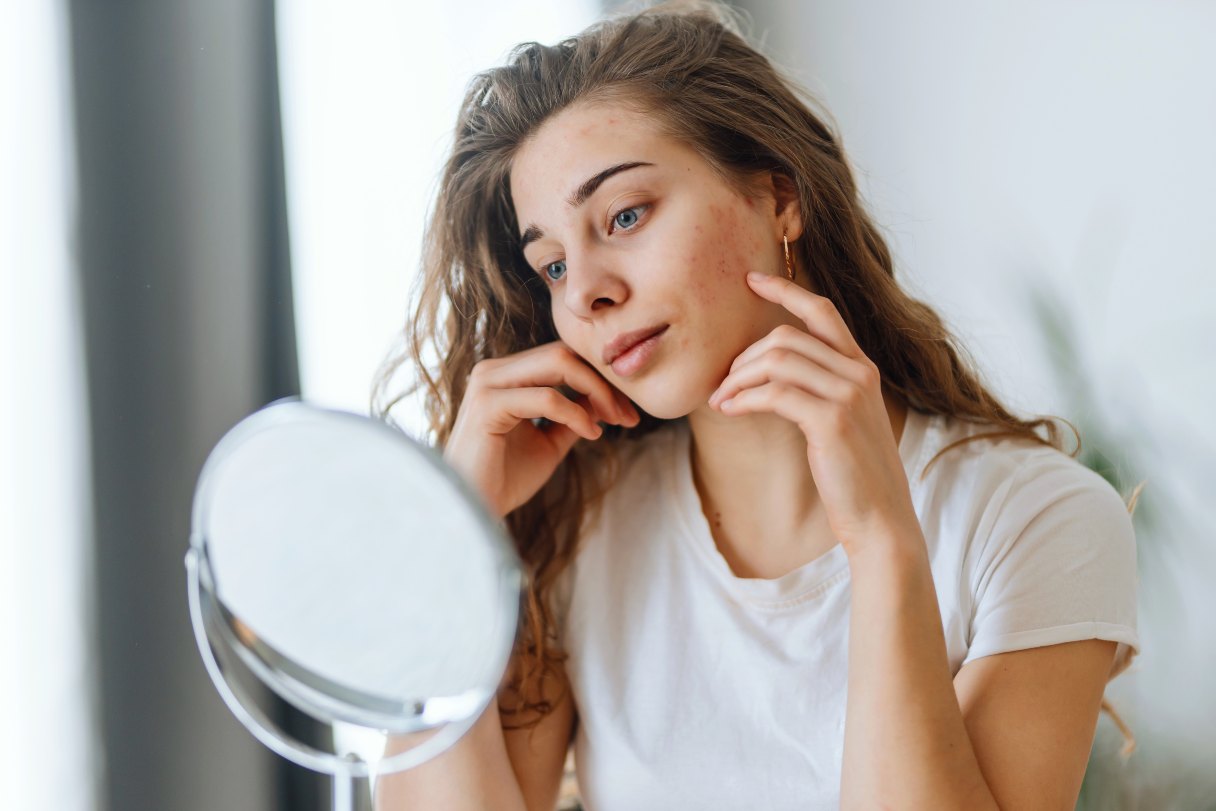Discoloration correcting serums promote a clear, smooth and even skin surface.1 They can minimize the appearance of dark patches, hyperpigmentation and scars,1 and may clue you into problems that require further evaluation. The right correcting serum is a valuable partner in maintaining a youthful complexion and your skin's overall health.
Over time, exposure to chemicals, pollutants and the sun can leave your outer layer discolored and looking older than its years.1 Here's what you need to know when selecting the right treatment.
What Is Discoloration Correcting Serum?
While skin discoloration correcting serums consist of various ingredients, the most prominent ones are exfoliants. These are substances that turn over layers of dead skin cells more quickly than they would progress independently. Your body then replaces them with healthy, new cells.2
Chemical exfoliation is a type of exfoliation that treats skin discoloration with a chemical substance, which affects deeper layers of skin tissue.3 Products use various acids to accelerate the chemical exfoliation process.2 Many of these are natural in origin, while others are lab-synthesized.2 Learning how to read labels and finding the right ingredients that work with your skin's unique chemistry are skills that take time to hone, so be patient as you experiment with what works best for you. A dermatologist can assist in this process.
Chemical exfoliants in discoloration correcting serums come in three principal types of acid: AHAs, BHAs and PHAs.2
| Type of acid or exfoliant | How they work | You might recognize them as |
|---|---|---|
| Alpha hydroxy acids (AHAs) | Gentle, works on the skin's surface | Glycolic, lactic, citric, malic acids |
| Beta hydroxy acids (BHAs) | Get deep into the skin but can cause irritation | Salicylic acid |
| Polyhydroxy acids (PHAs) | Gentler than AHAs and BHAs due to their larger molecules, suitable for highly sensitive skin | Gluconolactone, galactose, lactobionic acid |
Common Causes of Skin Discoloration
Your skin's overall color pattern begins in your genes.1 The choices you make and things you encounter throughout your life play equal roles, thanks to the magic of epigenetics — how the environment affects genetic expression.4 Therefore, exposure to sunlight and environmental toxins can also impact your appearance.1
Skin discoloration occurs in two basic ways:1
- Hyperpigmentation: Excess pigment, seen in age spots, freckles, port wine stains and scars
- Hypopigmentation: A lack of necessary pigment seen in albinism and vitiligo
Common types and causes of skin discoloration are outlined in the table below.1
| Type of skin discoloration | What it is |
|---|---|
| Acne | Consists of pustules, papules, nodules, whiteheads, blackheads and cysts |
| Eczema | An inflammatory condition that causes rashes |
| Melasma | A darkening or browning of larger patches on the face or arms. It is more common in women. |
| Vitiligo | A condition that causes patches of skin to turn white |
| Addison's disease | A condition in which your adrenal glands fail to secrete sufficient cortisol, causing hyperpigmentation |
| Post-inflammatory hyperpigmentation | This condition may occur after acne breakouts or any condition causing skin inflammation. |
| Sun damage | This includes age spots and various skin cancers. |
Sun damage is the most common and concerning cause of skin discoloration,1 which is why it's important to inspect your skin regularly. For example, scaly dry spots can indicate benign keratosis.5 However, 10% to 15% of these spots will develop into skin cancer.5 An early visit to a dermatologist for removal can boost your long-term health outcome.5
However, most cases of skin discoloration aren't dangerous, other than to your self-esteem. Mental health matters, and you feel better when you look your best. The right discoloration correcting serum can take care of most minor issues.
Benefits of Using Discoloration Correcting Serum
You already know one benefit of using discoloration correcting serum: Applying it requires you to inspect your skin, which can clue you into warning signs of cancer. When treated early, doctors can cure most cases, as prompt detection saves lives.6
However, the most visible benefit of using discoloration correction serum is your skin's healthy glow. Regular application gradually reduces the appearance of dark spots, and many such products also reverse other early aging signs, such as fine lines and wrinkles.1
When you look good, you feel better about yourself. Although accepting your appearance is a crucial part of mental health, practicing regular self-care in the form of tending to your complexion is a positive way to nurture yourself and improve your overall sense of well-being.
Choosing the Right Discoloration Correcting Serum
Everyone's skin is unique. Ask yourself the following questions when choosing a discoloration correcting serum:2
- Do I have primarily surface issues from sun or environmental damage? If so, AHAs might be for you. However, they come in various strengths and formulas, so finding the right one may still take time.
- Do I have severe acne scarring? If so, BHA products that work deep into your skin's surface may be your best bet.
- Do I have extremely sensitive skin? If so, a gentle PHA cream may minimize redness.
How to Use Discoloration Correcting Serum
Discoloration correcting serums sink and absorb into the skin much faster than your thicker creams or products.7 Cleanse the skin first to prepare for your serum and then follow it up with a moisturizer and sunscreen.8
If you find one item too irritating, try reducing your application to every other day or every third day. You might also experiment with skin cycling, which alternates products one at a time, allowing your skin to rebound between treatments.9
Cost of Discoloration Correcting Serums
The performance of skin care products is determined by various elements, such as active ingredients, their composition, the method of application and the compound's stability. Serums, for instance, are priced diversely, ranging from below $20 to hundreds of dollars. However, the price is not necessarily a reflection of the product's effectiveness. The key is to focus on the ingredients of the serum. It's crucial to read product labels thoroughly to find the formulation that best suits your skin care needs.7
It is always best to work with your dermatologist to select a suitable skin care routine.9 Your provider can assist with a detailed skin analysis to help you choose the right products.9 Although an appointment may cost more money up front, it can save you a small fortune in serums that don't work.
CareCredit Credit Card Financing for Dermatology
The CareCredit credit card makes it easy to pay for dermatology visits, over-the-counter treatments and prescription medications at locations within the CareCredit network.* Start enhancing your skin today and find a dermatologist near you that accepts CareCredit. Continue your wellness journey by downloading the CareCredit Mobile App to manage your account, find a provider on the go and easily access the Well U blog for more great articles, podcasts and videos.
In addition to dermatology, you can also use your CareCredit credit card for other cosmetic procedures, dentistry, pet care, vision, hearing, health systems, pharmacy purchases, spa treatments and so much more within the CareCredit network. How will you invest in your health and wellness next?
Author Bio
Mia Barnes is a freelance writer and researcher with experience covering health, well-being and financial wellness. She is also the Founder and Editor-in-Chief of Body+Mind Magazine. Her work has appeared on publications such as Science of People, SMSNA, Employee Benefit News and Austin Fit Magazine.







